What is the zodiac?
The zodiac, the twelve signs listed in a horoscope, is closely tied to how the earth moves through the heavens. The signs are derived from twelve constellations that mark out the path on which the sun appears to travel over the course of a year. The dates in a horoscope correspond, in principle, to when the sun passes through each constellation. But a closer examination of the motion of the earth, the sun, and the stars shows the zodiac to be more complex than you might imagine!
As the earth orbits the sun, the sun appears to pass in front of different constellations. Much like the moon appears in a slightly different place in the sky each night... | 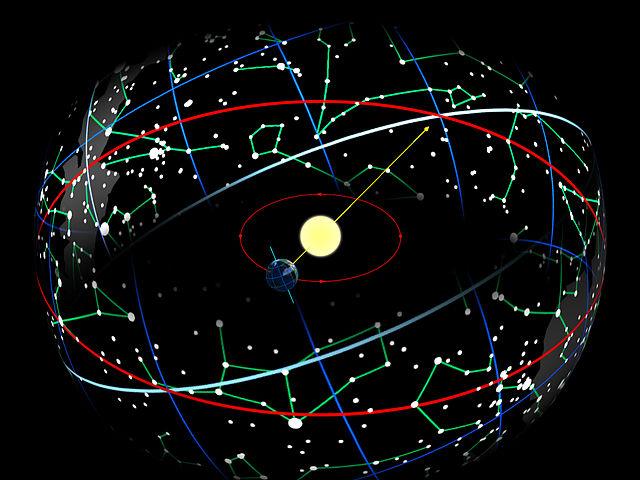 |
Company seeks FDA approval for personal DNA test
Genetic test maker 23andMe is asking the Food and Drug Administration to approve its personalized DNA test in a move that, if successful, could boost acceptance of technology that is viewed skeptically by leading scientists who question its usefulness.
23andMe is part of a fledgling industry that allows consumers to peek into their genetic code for details about their ancestry and future health. The company's saliva-based kits have attracted scrutiny for claiming to help users detect whether they are likely to develop illnesses like breast cancer, heart disease and Alzheimer's. The biology of how DNA variations actually lead to certain diseases is still poorly understood, and many geneticists say such tests are built on flimsy evidence. | 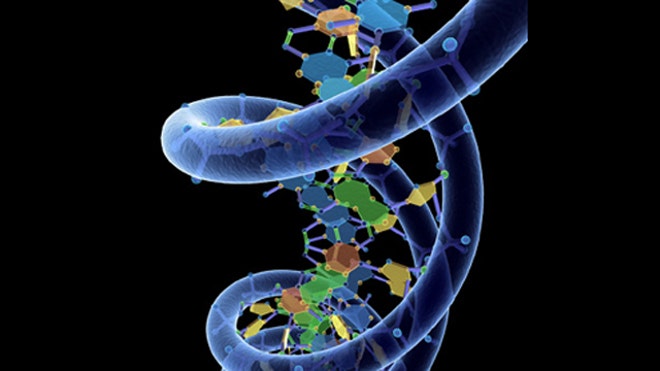 |
Gallium Nitride Nano-scale Semiconductor Laser is World’s Smallest
The world’s smallest semiconductor laser has been developed by physicists from The University of Texas at Austin, collaborating with colleagues in Taiwan and China. The laser is so small that it is not visible to the naked eye.
It is a breakthrough in the theoretical miniaturization of photonics technology and could have applications ranging from computing to medicine. The subdiffraction nanolaser, based on surface plasmon amplification by stimulated emission of radiation, was reported in the July 27, 2012 issue of Science. Miniaturization of semiconductor lasers is an important technology for the development of faster, smaller and lower energy photon-based electronics, for example ultrafast computer chips, highly sensitive biosensors for detecting, treating and studying disease, and next-generation communication technologies. |  |
Life in Egypt’s Nubian Empire
During the great imperial age of the Ramesside pharaohs (c.1307-1070 BC), Egypt’s empire stretched from what is now Syria to northern Sudan, and with considerable influence beyond. Temples were decorated to emphasise complete Egyptian control over the known world: scenes of orderly Egyptian troops, led by pharaoh in his chariot, are shown overwhelming unfortunate enemies, be they Libyan, Near Eastern, or Nubian. Accompanying texts describe battles and campaigns – always victorious – and highlight the lowly character of Egypt’s neighbours and foes. Nubia had been reconquered by Egypt around 1500 BC, and would remain part of the empire until c.1070 BC. Its inhabitants were described ignominiously as ‘not people one respects, they are wretches, with vanquished hearts’.
| 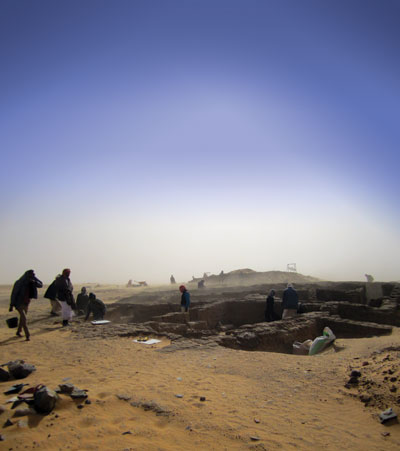 |
Horses in archaeology: riding through history
It all began not with the horse but with the donkey. One of the earliest depictions of equids that we have is the so-called ‘Standard of Ur’, a wooden box covered with bitumen into which shell and coloured stone has been pressed. The resulting mosaic depicts farming, banqueting, and battle scenes. Excavated from the Royal Cemetery in the Sumerian city of Ur, now in southern Iraq, it dates from around 2600 BC and might originally have been the sounding box of a harp or lyre. It shows in crisp detail among the ruler’s entourage a four-wheeled chariot pulled by four donkeys.
| 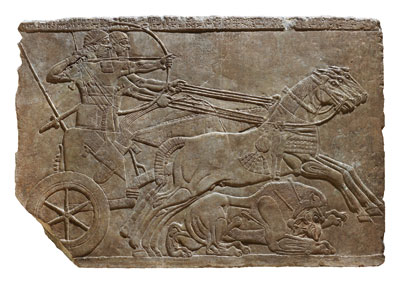 |
Pushing back pottery use
Fragments of 20,000-year-old pottery discovered in south-east China have pushed back the use of ceramics to 10,000 years before agriculture.
This shows that pottery was invented by mobile hunter-gatherers, rather than developing from the more settled lifestyles of early farmers, as was previously believed. Found during excavations at Xianrendong Cave, the sherds are 2,000-3,000 years older than any pottery previously found, and date from the peak of the last glacial period, when climate change dramatically reduced regional food resources. | 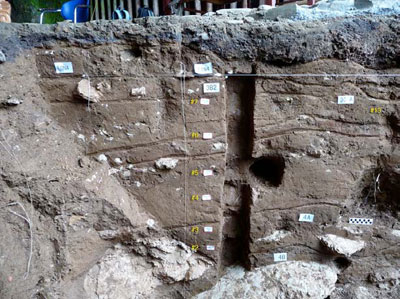 |
First Pisa, now Rome's Colosseum - it's leaning
ROME (Reuters) - The ancient Colosseum of Rome, where gladiators fought for their lives, is slanting about 40 cm (16 inches) lower on the south side than on the north, and authorities are investigating whether it needs urgent repairs.
Experts first noticed the incline about a year ago and have been monitoring it for the past few months, Rossella Rea, director at the 2,000-year-old monument, said in an article published in the Italian daily Corriere della Sera on Sunday. The Leaning Tower of Pisa, another of Italy's most popular attractions, was reopened in 2001 after being shut for more than a decade as engineers worked to prevent it from falling over and to make it safe for visitors. |  |
FUSE Detects Xenon and Krypton in White Dwarf Star
For the first time ever, astronomers from NASA and the University of Tübingen in Germany have detected rare noble gases krypton and xenon in the spectrum of a hot white dwarf.
Discovered in 1898 by Sir William Ramsay and Morris Travers, krypton (Kr) and xenon (Xe) are two of the rarest elements on Earth. They were formed with all the other elements billions of years ago by earlier generations of stars. Astronomers assume that they were synthesized during the supernovae of very heavy stars and in stars of mid-range mass like our Sun. Until recently, there was no spectroscopic proof of krypton or xenon from the Sun or other stars – although astronomers detected krypton in interstellar space. |  |
German Archaeologists Unearth Tomb of Mayan Prince at Uxul
The team has been digging for four years together with Mexican antiquity authorities at Uxul in present-day Campeche, Mexico. The aim of the excavation project led by Prof Nikolai Grube and Dr Kai Delvendahl is to study the process of centralization and collapse of hegemonic state structures in the Mayan Lowlands using the example of the mid-sized archeological site at Uxul and its ties to the supraregional center at Calakmul.
Since 2011, the team has concentrated on the royal palace of Uxul which is located directly south of the main squares in the center of the ancient city. The royal palace, measuring about 120 x 130 meters, consists of at least eleven individual buildings which all are aligned around five courtyards. |  |
Moon Formation May Have Been The Result Of Larger, Faster Planet Collision
While scientists tend to accept the theory that the Moon was formed following a collision between a young Earth and a second planet, new research published online earlier this month suggests that the impactor might have been larger and traveling faster than previously believed.
Current theory suggests that Earth’s satellite was formed when the protoplanet was hit by a second world, believed to have been about the size of Mars, billions of years ago, Evan Ackerman of DVice wrote on Thursday. Now, however, Andreas Reufer of the University of Bern in Switzerland and a team of colleagues are claiming that the planet was actually larger, moving at faster speeds, and colliding with the Earth at a steeper angle than the current model would suggest. Furthermore, the object responsible for the collision may still be at large. |  |
Probing gravity
Phys.org) -- Einstein's theory of relativity is remarkable not only because it is so successful in explaining seemingly bizarre observations (like the bending of starlight) or because it has assembled a coherent picture of nature. One would expect these results from any good theory. Relativity is also amazing because its has shown that the universe behaves in completely non-intuitive ways (at least to humans): time dilates, lengths contract, gravity warps space, and mass and energy are related by E=mc^2. Our so-called "common sense" is sometimes just plain wrong.
It is no wonder, therefore, that astronomers are constantly testing relativity to see whether all of its details are perfectly in order, or if some adjustment might be necessary that might also change our basic understanding of space and time. |  |


No comments:
Post a Comment